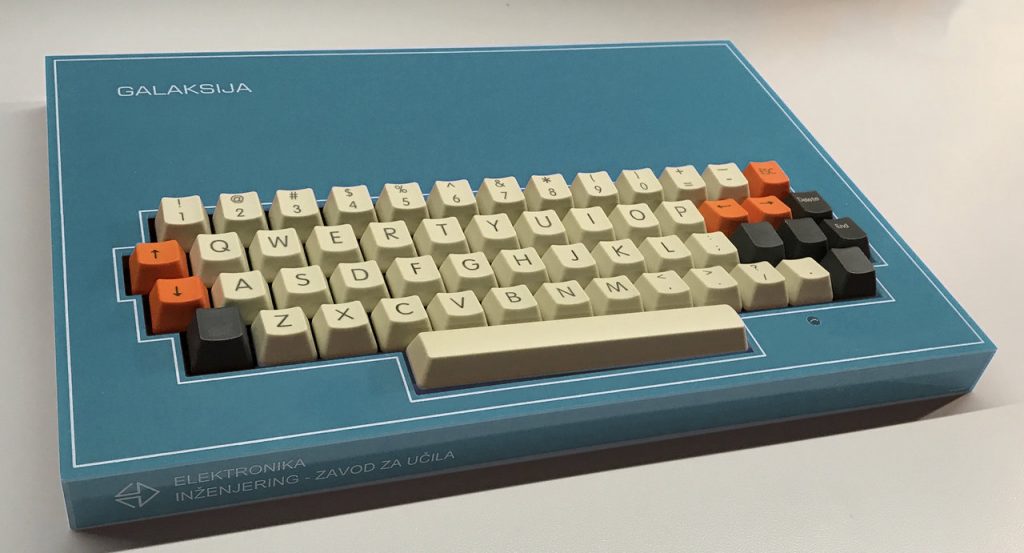In our review of computing behind the Iron Curtain, we are going to make a little detour to tell how tech buffs were getting by in Yugoslavia. In particular we are going to refer to a team, the Galaksija, which could not only be considered something of a great uncle of open hardware devices like the Raspberry Pi, in addition spawned a movement that is very reminiscent of open source communities.
Although it was considered a socialist country, Yugoslavia managed to remain independent from Moscow, under the strong leadership of its president for life Josip Broz Tito.
This country, which no longer exists, was made up of six socialist republics; Bosnia and Herzegovina, Croatia, Slovenia, Macedonia, Montenegro and Serbia.
Along with India, Egypt, Ghana, and Indonesia, Yugoslavia founded the Non-Aligned Movement, an agreement of developing nations that aspired to maintain their neutrality during the Cold War.
With the permanent threat that his Soviet neighbor would decide to discipline his wayward socialist brother, and without being able to turn to Washington without resigning his commitment to socialism, Tito had to find a way to boost the local arms industry and various mass consumer products. This required a controllability that could only be achieved with computers.
Robotics specialist Dr. Rajko Tomović, together with teams of mathematicians and mechanical engineers, began the development of the Yugoslav computer industry. By the 80s there were several models of locally produced computers that were not available to the average Yugoslav, and some more imported, although this was not easy either.
As a result, the use of computers that in the West were intended for domestic use, in Yugoslavia could only be found in government offices, large companies and universities.
A young engineer and inventor, Voja Antonić, had access to the manual for a new chip developed by RCA. When reading it it occurred to him the idea of building a computer whose 64 × 48 block graphics were generated entirely using the Zilog Z80A microprocessor, very cheap and available in electronics stores throughout Yugoslavia.
Opensource to the Yugoslav
Since Antonić s designit involved construction and reduced the price, it made it possible for non-technical users to assemble the computer themselves.
Antonić was looking for a place to publish the diagrams of his invention and he got a mutual friend to connect him with Galaksija, a popular science magazine.
The magazine published a special issue called Computers at home and it was devoted for the most part to Antonić's computer: including the diagrams, complete instructions for the assembly of the circuit and places to get the materials.
The publication had a circulation of 120.000 copies and at least 8.000 readers claimed to have built their own Galaksija
Antonić's microcomputer contained 4K bytes of memory , and could only display three one-word error messages: WHAT? " For syntax errors, a HOW? yes if the instruction was not recognized, and SORRY if it exceeded the memory capacity.
Like other models of the time, Galaksija used the cassette as a storage medium. But, To prevent copy protection and to facilitate the modification and distribution of the programs, Antonić prevented the programs from starting automatically by design. The user had to type a command to start the execution. This made the content of a tape capable of being edited or duplicated.
This is followed by Zoran Modli, a popular announcer of the time. From the magazine they proposed to him to have in the program a segment to broadcast programs over the radio so listeners could record them and then upload them to their computer. It was an instant hit.
Listeners began writing shows and mailing them to the station. These programs included content of various kinds such as magazines, party invitations, study guides, and games. In many cases they were enhancements to programs created by other listeners.
With the death of Tito, Yugoslavia entered a period of political and economic uncertainty that would end with the disappearance of the country. The restrictions were lifted and Western products relegated this team to the chest of memories.

I love the idea of a team saying "I'm sorry" when it can't handle homework. How well it would have worked for MS Windows! :)
Very good story, very interesting as with such limitations they even managed to pass programs.
The broadcasting of radio programs was done in Latin America and I think also in Spain with the home computers of the time.
They never worked for me.
But, I agree with your comment. In general, I think that hardware was used better before
I did not know this interesting story, but it makes me reflect, it seems that not having everything served on a tray as we have now, before there was more creativity. Now under the motto (very popular among programmers) "do not reinvent the wheel", we are backfiring, for example: how many web browsers are left? Search engines? Email clients? IDEs ?:
Browsers, those used by 90% of people or more: Google Chrome, Mozilla Firefox, Safari and Microsodt Edge, the rest are derived from Chromium or Firefox.
Search engines: worldwide, only 2: Google and Yahoo / Bing (merged) take more than 95% of the cake. DuckDuckGo (the one I use) has a 0,65% market share and uses the Yahoo search engine.
Mail clients: Outlook, Thunderbird and I don't know which one will be for Mac. There are others, used by almost no one.
IDEs: Microsoft ate the entire market, now it's Visual Studio, they survive: Lazarus, Eclipse and only on Windows: Delphi. I am referring to IDEs with a graphical interface.
And since we are here, we are going with the Internet sites, with precisely the blogs, many abandoned, others disappeared, luckily some survive, many were swallowed up by social networks and again, how many are there?
Greetings.